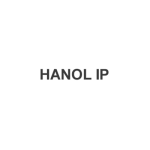On October 19 2021, the Korean Patent Act was amended to allow a ‘separated application’, so as to pursue potentially allowable portions of the pending claims even after an appeal against a final rejection has been rejected (Article 52bis). This separated application system is different from the existing divisional application system, and will be effective from April 20 2022.
Current procedural options are insufficient
Under Korean patent practice, an application is either allowed or rejected in its entirety (all or nothing), although substantive examination is performed on a claim-by-claim basis. While granted patents are invalidated on a claim-by-claim basis, entire applications, including both potentially allowable claims and rejected claims, have been rejected even when the rejection was directed only to some of the claims (Supreme Court Decision 2001Hu1044).
Meanwhile, under the current law, claim amendments or divisional applications are not possible ‘after’ an appeal against a final rejection has been filed with the Intellectual Property Trial and Appeal Board (IPTAB). In this situation, there is no way to protect any potentially allowable claims which are present in the rejected application unless such appeal has a favourable result. Accordingly, as a precautionary measure, applicants have typically used an option to file divisional applications ‘at the same time’ that they appeal to the final rejection.
Further safeguards will be available
As of April 20 2022, applicants will be able to enjoy a further safeguard since the separated application will be allowed in such situation. This will also be useful when applicants have missed filing of a divisional application. Compared with divisional applications, the separated application can proceed in the manner as illustrated below.

Time limits for filing
A separated application can only be filed within 30 days of the receipt of an IPTAB decision to reject an appeal against the final rejection; since this deadline can be extended by 30 days, the filing of a separated application is also possible by the extended deadline (Article 52bis(1)).
Requirements for subject matter
A separated application is allowed within the scope of the original disclosure of the parent application. The claims are limited to any one of the following (Article 52bis(1)):
A claim which was not rejected in the final rejection subject to appeal;
A claim which is drafted by removing from a rejected claim the selective features on which the final rejection was based;
A claim of item 1 or 2, which is drafted by narrowing the claim, correcting a clerical error(s), or clarifying an unclear description(s); and
A claim of any one of items 1 to 3, which is drafted by deleting subject matter which goes beyond the original disclosure of the parent application.
Requirements for formalities
The separated application (specification and drawings) cannot be filed in English, and the claims must be submitted at the time of filing (Article 52bis(3)). The applicant(s) must be the same as those of the parent application.
Effective filing date
Like a divisional application, a separated application benefits from the same filing date of the parent application, and can also enjoy the priority benefits of the parent application (Article 52bis(2)).
Prosecution/grant
Like a divisional application, a request for examination can be filed within 30 days of the date of filing a separated application (Article 59(3)). It is possible to obtain a patent rapidly since only the allowable portions of the claims are separated from the parent application.
Violating the requirements for subject matter according to Article 52bis(1) will be grounds for rejection, grounds for third-party observation, and grounds for invalidation.
Limitation
A separated application is not allowed to use an option to file a request for re-examination along with an amendment when a notice of allowance or a notice of final rejection is issued (Article 67bis(1)); thus, it has fewer opportunities to file an amendment compared to a divisional application.
Further, separated applications are banned from further continuing the application since they cannot be a basis for filing a next generation of divisional or separated applications, or filing a conversion between patent and utility model applications (Article 52bis(4)).
Significance
With recent legal updates, South Korea has changed to a more flexible system that allows more procedural options to applicants. Accordingly, it is expected that applicants can manage their IP portfolio more strategically by using options at various stages of the prosecution to achieve the best results.
This new separated application system applies to utility model applications as well as patent applications. Separated applications are available for applications where an appeal against a final rejection has been filed with IPTAB on or after April 20 2022.
Min Son, PhD
Managing partner, Hanol IP & Law












